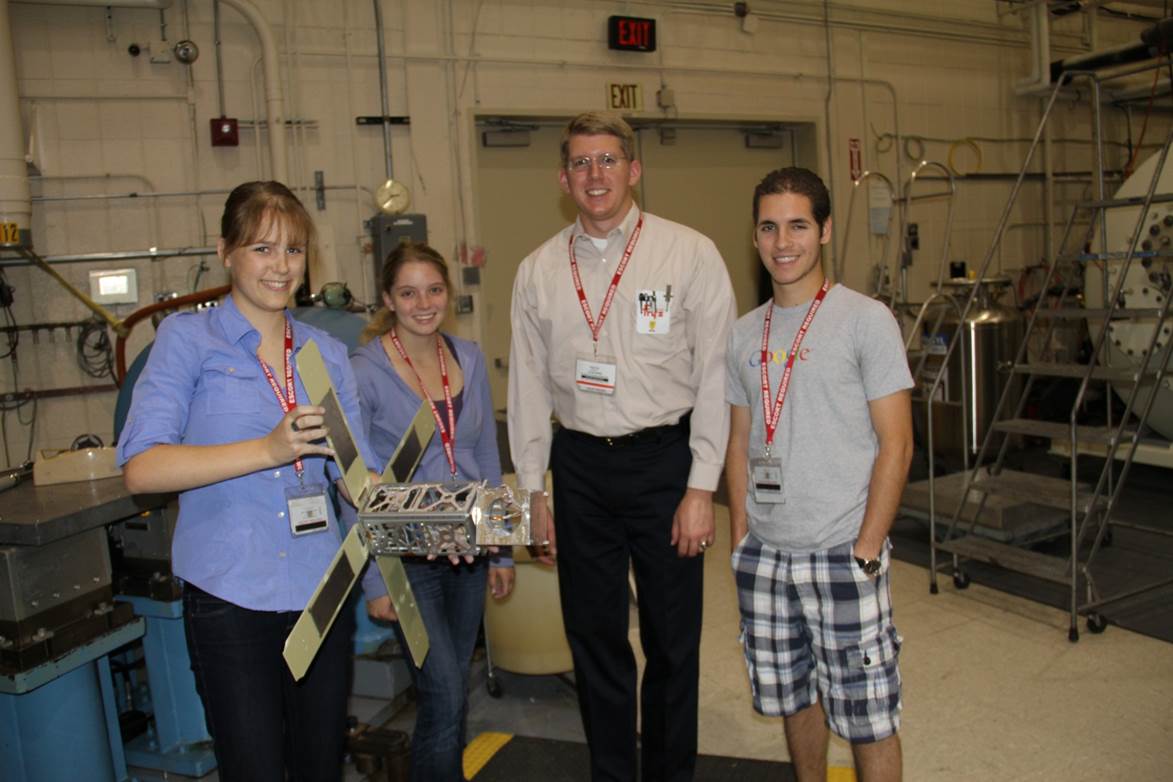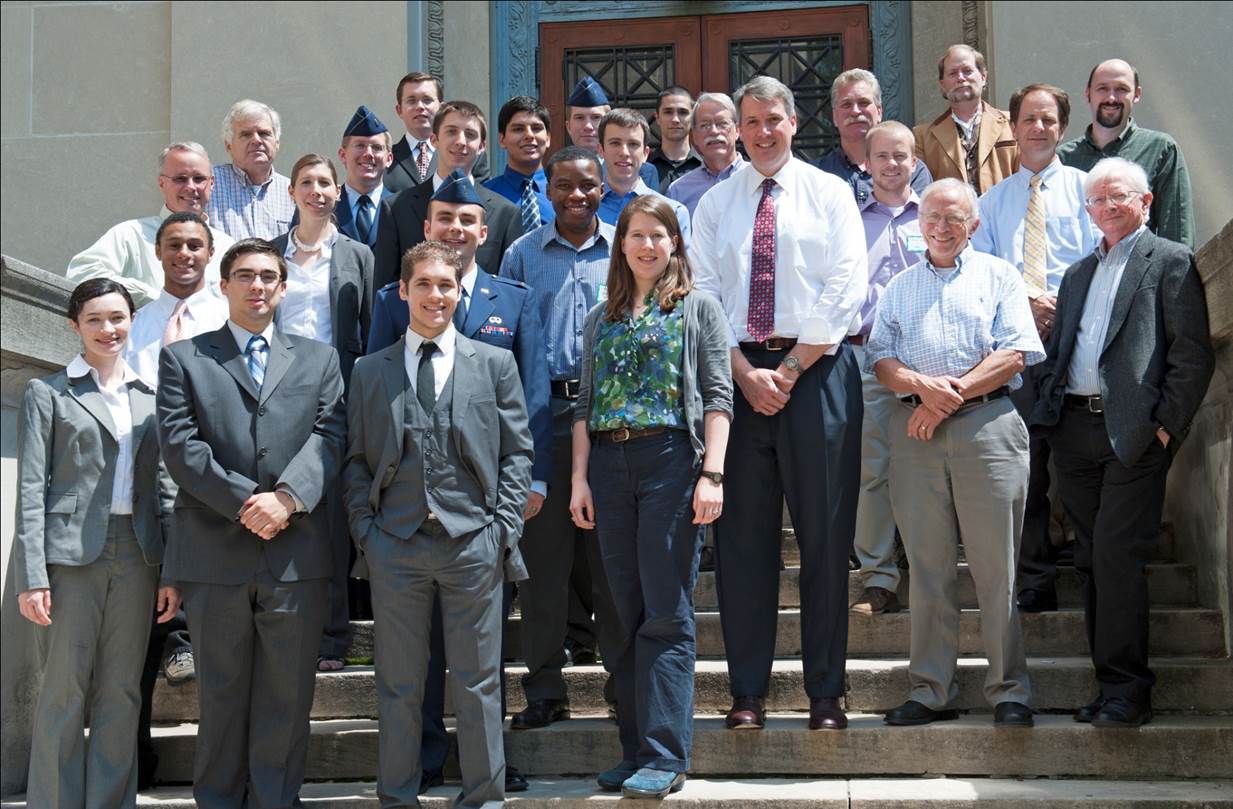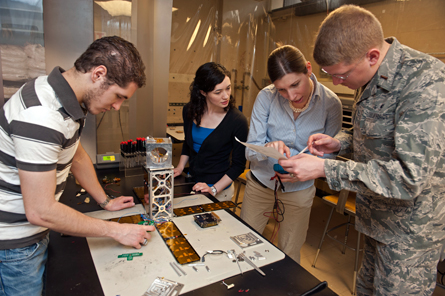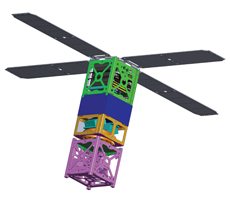Capstone Project MicroMAS
Innovative microsatellite could expand understanding of storm systems
MIT Lincoln Laboratory and MIT’s Space Systems Laboratory developed the prototype system |
|
|
|
It's a quite ordinary occurrence for researchers at MIT Lincoln Laboratory to have systems they developed chosen to fly aboard U.S. government aircraft and satellites on scientific missions. For students in two classes in MIT's Department of Aeronautics and Astronautics, it is a special experience to have a microsatellite they conceived and built launched from a larger space vehicle NASA has scheduled for flight in 2014. The students developed the Micro-sized Microwave Atmospheric Satellite or MicroMAS, a three-unit miniaturized satellite designed for providing observations of hurricane dynamics and severe storms. The MicroMAS project evolved from an idea Dr. William Blackwell, assistant leader of the Sensor Technology and System Applications Group at Lincoln Laboratory and Principal Investigator of the MicroMAS mission, had for an atmospheric satellite that would provide high-quality weather observations and take less time and cost to fabricate. "This was a picture perfect project for students interested in satellite design," says Blackwell about the conceptual problem of creating an innovative, high-tech satellite that can be adapted to the requirements for a 30 × 10 × 10 cm CubeSat with a mass of approximately 5 kg, a category of compact satellite for which commercial off-the-shelf components are typically used. The spacecraft folds up into the size of a quart milk carton, and after ejection from a host satellite, this free-flying microsatellite spins and its solar panels open out like petals of a flower. The panels provide power to the MicroMAS for about half its orbit about Earth and charges batteries that are used for the other half of the orbit. MicroMAS is scheduled to be delivered to the ISS aboard the Orb CRS-2 mission in May 2014, and MicroMAS will be released from ISS during the summer of 2014. |
|
|
 |






